Revision of the Neotropical water scavenger beetle genus Novochares Girón & Short (Coleoptera, Hydrophilidae, Acidocerinae)
- PMID: 38327679
- PMCID: PMC10846839
- DOI: 10.3897/zookeys.1171.104142
Revision of the Neotropical water scavenger beetle genus Novochares Girón & Short (Coleoptera, Hydrophilidae, Acidocerinae)
Abstract
The water scavenger beetle genus Novochares Girón & Short, 2021 is revised using a combination of adult morphological and DNA sequence data. Thirty-eight new species are described: Novocharesaperitosp. nov. (Bolivia), N.bacasp. nov. (Brazil, Ecuador, Peru, Suriname), N.bidenssp. nov. (Brazil), N.bisinuatussp. nov. (Brazil), N.clavierisp. nov. (Brazil, French Guiana, Peru), N.dantasp. nov. (Venezuela), N.dentatussp. nov. (Ecuador, Venezuela), N.dicranospathussp. nov. (Peru), N.duosp. nov. (Brazil, French Guiana, Guyana, Suriname, Venezuela), N.fernandezaesp. nov. (Brazil, Peru, Venezuela), N.florifersp. nov. (Brazil), N.furcatussp. nov. (Brazil), N.garciaisp. nov. (Venezuela), N.garfosp. nov. (Brazil), N.geminussp. nov. (Brazil), N.kawsaysp. nov. (Ecuador, Peru), N.latussp. nov. (Brazil), N.minorsp. nov. (Peru, Suriname, Venezuela), N.mojenossp. nov. (Bolivia), N.murasp. nov. (Brazil), N.orchissp. nov. (Brazil, French Guiana, Suriname), N.pastinumsp. nov. (Ecuador), N.pertusussp. nov. (Brazil), N.piaroasp. nov. (Venezuela), N.pilatussp. nov. (Venezuela), N.pumesp. nov. (Venezuela), N.punctatostriatussp. nov. (Brazil, French Guiana, Guyana, Peru, Suriname), N.quadrispinussp. nov. (Brazil, Guyana, Suriname), N.spanglerisp. nov. (Peru), N.tambopatensesp. nov. (Peru), N.tenedorsp. nov. (Guyana, Venezuela), N.triangularissp. nov. (Bolivia, Brazil, Paraguay), N.tridentissp. nov. (Brazil), N.trifurcatussp. nov. (Peru), N.unguissp. nov. (Bolivia, Peru), N.xingusp. nov. (Brazil), and N.yanomamisp. nov. (Venezuela), N.yorasp. nov. (Peru). One new synonym is proposed: N.carmona (Short, 2005) syn. nov. was determined to be a junior subjective synonym of N.chaquensis (Fernández, 1982). Novocharesinornatus (d'Orchymont, 1926) is considered incertae sedis. Updated distributions and new records are provided for most previously described species in the genus. Novocharessallaei (Sharp, 1882) is considered native to the USA (Florida) and not an introduced species as previously suggested. Novochares now contains 52 species and spans the entire Neotropical region from Mexico to Argentina, including the Caribbean islands.
ResumenEl género de escarabajos acuáticos detritívoros Novochares Girón & Short, 2021, se revisa usando una combinación de datos morfológicos de los adultos y secuencias de ADN. Se describen 38 especies nuevas: Novocharesaperitosp. nov. (Bolivia), N.bacasp. nov. (Brasil, Ecuador, Perú, Surinam), N.bidenssp. nov. (Brasil), N.bisinuatussp. nov. (Brasil), N.clavierisp. nov. (Brasil, Guyana Francesa, Perú), N.dantasp. nov. (Venezuela), N.dentatussp. nov. (Ecuador, Venezuela), N.dicranospathussp. nov. (Perú), N.duosp. nov. (Brasil, Guyana, Guyana Francesa, Surinam, Venezuela), N.fernandezaesp. nov. (Brasil, Perú, Venezuela), N.florifersp. nov. (Brasil), N.furcatussp. nov. (Brasil), N.garciaisp. nov. (Venezuela), N.garfosp. nov. (Brasil), N.geminussp. nov. (Brasil), N.kawsaysp. nov. (Ecuador, Perú), N.latussp. nov. (Brasil), N.minorsp. nov. (Perú, Surinam, Venezuela), N.mojenossp. nov. (Bolivia), N.murasp. nov. (Brasil), N.orchissp. nov. (Brasil, Guyana Francesa, Surinam), N.pastinumsp. nov. (Ecuador), N.pertusussp. nov. (Brasil), N.piaroasp. nov. (Venezuela), N.pilatussp. nov. (Venezuela), N.pumesp. nov. (Venezuela), N.punctatostriatussp. nov. (Brasil, Guyana, Guyana Francesa, Perú, Surinam), N.quadrispinussp. nov. (Brasil, Guyana, Surinam), N.spanglerisp. nov. (Perú), N.tambopatensesp. nov. (Perú), N.tenedorsp. nov. (Guyana, Venezuela), N.triangularissp. nov. (Bolivia, Brasil, Paraguay), N.tridentissp. nov. (Brasil), N.trifurcatussp. nov. (Perú), N.unguissp. nov. (Bolivia, Perú), N.xingusp. nov. (Brasil), and N.yanomamisp. nov. (Venezuela), N.yorasp. nov. (Perú). Se propone una nueva sinonimia: N.carmona (Short, 2005) syn. nov. se determinó como sinónimo subjetivo posterior de N.chaquensis (Fernández, 1982). Novocharesinornatus (d’Orchymont, 1926) se considera incertae sedis. Se proveen distribuciones actualizadas y nuevos registros para la mayoría de las especies descritas previamente en el género. Novocharessallaei (Sharp, 1882) es considerada nativa en los Estados Unidos de América (Florida) y no como una especie potencialmente introducida como se afirmaba previamente. Novochares ahora contiene 52 especies y se extiende a lo largo de toda la región neotropical, desde México hasta Argentina, incluyendo las islas del Caribe.
Keywords: Aquatic beetles; Neotropical Region; integrative taxonomy; new species.
Andrew Edward Z. Short, Jennifer C. Girón.
Conflict of interest statement
No conflict of interest was declared.
Figures
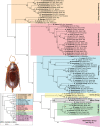





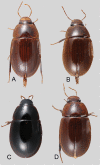
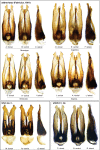

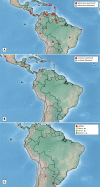
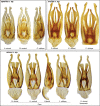





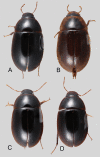
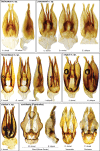


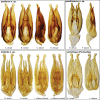






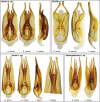
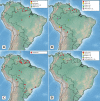
References
-
- Balfour-Browne J. (1939) Contribution to the Study of the Palpicornia. Part III. Annals & Magazine of Natural History 11(4): 289–310. 10.1080/00222933908526990 - DOI
-
- Bedel L. (1881) (Synonymie de quelques Hydrophilidæ et Sphæridiidæ exotiques décrits par Brullé). Annales de la Société Entomologique de France 6(1): XCIV–XCV. https://biodiversitylibrary.org/page/8996339
-
- Blatchley WS. (1917) On some new or noteworthy Coleoptera from the west coast of Florida. Canadian Entomologist 49(4): 137–143. 10.4039/Ent49137-4 - DOI
-
- Bruch C. (1915) Nuevas especies de coleópteros hidrofílidos. Revista del Museo de La Plata 19: 447–470. https://publicaciones.fcnym.unlp.edu.ar/rmlp/article/view/1317
-
- Brullé A. (1841) Famille des Hydrophiliens. In: d’Orbigny A. Voyage dans l’Amérique méridionale, tome sexiéme, 2e partie, Insectes. P. Bertrand, Paris, France, 52–59. https://biodiversitylibrary.org/page/2531016
LinkOut - more resources
Full Text Sources
Miscellaneous
